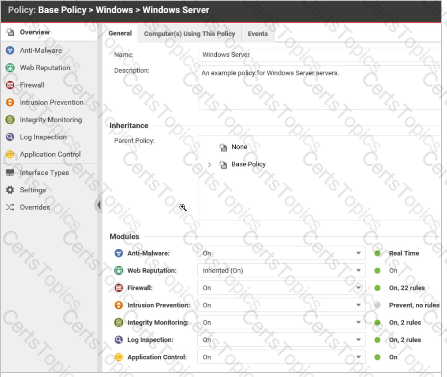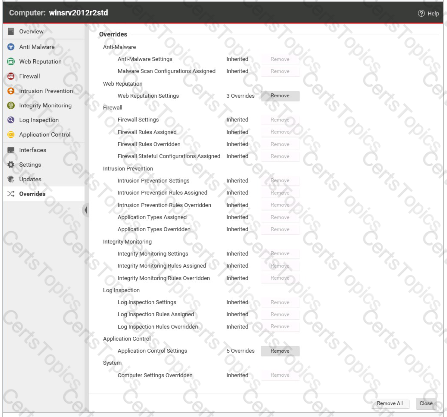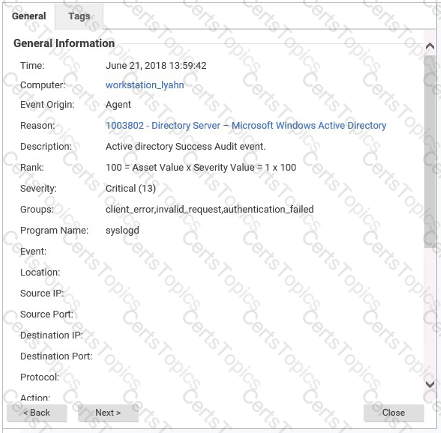Recommendation scans can detect applications and/or vulnerabilities on servers on the network. Which of the following Protection Modules make use of Recommendation scans?
Which of the following are valid methods for pre-approving software updates to prevent Ap-plication Control Events from being triggered by the execution of the modified software? Select all that apply.
Which of the following statements is true regarding Event Tagging?
In the policy displayed in the exhibit, the state of the Web Reputation Protection Module is set to "Inherited (On)", while the state for the other Protection Module is set to "On". Why is the Web Reputation Protection Module displayed differently than the other Protection Modules.

The Overrides settings for a computer are displayed in the exhibit. Which of the following statements is true regarding the displayed configuration?

Which of the following statements is FALSE regarding Firewall rules using the Bypass action?
Which of the following statements is true regarding the use of the Firewall Protection Module in Deep Security?
The details for an event are displayed in the exhibit. Based on these details, which Protection Module generated the event?

The Intrusion Prevention Protection Module is enabled and a Recommendation Scan is run to identify vulnerabilities on a Windows Server 2016 computer. How can you insure that the list of recommendations is always kept up to date?
Which of the following statements is true regarding Deep Security Relays?
Which of the following statements correctly describes Smart Folders?
Which of the following statements is true regarding the Log Inspection Protection Module?